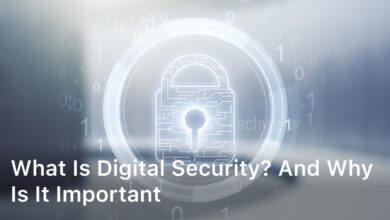Two-factor authentication is a security process that requires two separate forms of authentication to verify a user’s identity.
The first factor is typically something the user knows, such as a password or PIN, while the second factor is something the user has or something they are, like a physical token or biometric data.
By combining these two factors, the chances of an unauthorized person gaining access to your accounts or sensitive information are significantly reduced.
Understanding Two Factor Authentication
In today’s digital age, securing our online accounts is more important than ever.
Two factor authentication (2FA) is a widely used method that adds an extra layer of security, protecting your sensitive information from unauthorized access.
Let’s explore the concept of 2FA and its various methods to understand how it can enhance your online security.
Two factor authentication, also known as 2FA, requires users to provide two separate forms of verification to access their accounts.
This two-step verification process significantly reduces the risk of identity theft and unauthorized access.
One commonly used 2FA method is two-step verification.
With two-step verification, users are required to provide their password as the first factor and a unique code as the second factor.
A comprehensive understanding of the different types of 2FA methods available will help you make an informed decision when securing your online accounts.
In the next section, we will explore the pros and cons of each method, empowering you to choose the most suitable option for your needs.
| 2FA Method | Pros | Cons |
|---|---|---|
| SMS-Based Authentication | Convenient as it only requires a mobile phone | Potential vulnerabilities in SMS delivery and interception |
| Mobile App-Based Authentication | Enhanced security with continually changing codes | Dependent on the availability and compatibility of the mobile app |
| Hardware Tokens | Offers physical security and protection against hacks | May be expensive to implement and replace if lost |
| Biometric Verification | Highly secure with unique biological characteristics | Relies on the availability and accuracy of biometric sensors |
Best Practices for Implementing Two Factor Authentication
Implementing two factor authentication (2FA) is essential to enhance the security of your online accounts.
By following these best practices, you can ensure that your authentication methods are effective in safeguarding your digital identity.
1. Selecting Strong and Unique Passwords
When setting up 2FA, it is crucial to have a strong and unique password for each of your accounts.
A strong password should consist of a combination of uppercase and lowercase letters, numbers and special characters.
Avoid using common passwords or personal information that can be easily guessed.
2. Enabling 2FA on All Applicable Accounts
Enable 2FA on all accounts that offer this security feature.
This includes email accounts, social media platforms, banking websites and any other services that contain sensitive information.
By enabling 2FA on multiple accounts, you add an extra layer of protection to your overall online presence.
3. Securely Managing Your Authentication Methods
When using 2FA, it’s important to securely manage your authentication methods.
Keep your mobile devices, such as smartphones or hardware tokens, in a safe and secure location.
Avoid sharing your authentication codes or tokens with others, as it can compromise the security of your accounts.
4. Regularly Updating Your 2FA Settings
Regularly update your 2FA settings to ensure maximum security.
This includes reviewing the authentication methods linked to your accounts, removing any old or unused methods and adding new ones as needed.
Additionally, make sure to keep your 2FA apps or devices up to date with the latest software and firmware updates.
5. Use Backup Methods
Consider using backup methods for 2FA.
Some services offer backup codes or alternate authentication methods, such as email verification or security questions.
These backup methods can be used in case you lose access to your primary 2FA device or app.
6. Educate Yourself and Stay Informed
Stay informed about the latest trends and advancements in two factor authentication methods.
Keep yourself educated about potential security risks and vulnerabilities.
Follow reliable sources and security experts and regularly update your knowledge about best practices in digital security.
| Best Practice | Description |
|---|---|
| Selecting Strong and Unique Passwords | Creating strong and unique passwords for each account. |
| Enabling 2FA on All Applicable Accounts | Activating two factor authentication on all accounts. |
| Securely Managing Your Authentication Methods | Ensuring the safe storage and protection of authentication codes and devices. |
| Regularly Updating Your 2FA Settings | Keeping the authentication methods up to date and removing unused ones. |
| Use Backup Methods | Utilizing backup authentication methods in case of device loss. |
| Educate Yourself and Stay Informed | Continuously learning about the latest in 2FA and digital security. |
Conclusion
In conclusion, implementing two factor authentication (2FA) is crucial for safeguarding your online identity and enhancing your digital security.
By combining two separate forms of verification, such as a password and a unique code, you can significantly reduce the risk of unauthorized access to your accounts.
When choosing a suitable 2FA method, consider the different types we explored in this article, including SMS based authentication, mobile app based authentication, hardware tokens and biometric verification.
Each has its own pros and cons, so select a combination that aligns with your individual needs and preferences.
Furthermore, it is essential to follow the best practices outlined in this article for implementing 2FA effectively.
This includes selecting strong and unique passwords, enabling 2FA on all applicable accounts and securely managing your authentication methods.
Regularly updating your 2FA settings is also crucial to stay one step ahead of potential cyber threats.
By taking these measures and staying informed about the evolving landscape of digital security, you can confidently navigate the online world with heightened protection and peace of mind.
FAQ
What is two factor authentication (2FA)?
Two factor authentication (2FA) is a security measure that requires users to provide two separate forms of verification to access their online accounts. This typically includes something the user knows, like a password, and something they possess, such as a verification code sent to their mobile device.
Why is two factor authentication important?
Two factor authentication adds an extra layer of security to your online accounts, making it significantly harder for hackers to gain unauthorized access. Even if someone manages to obtain your password, they would still need the second form of verification, typically a unique code sent to your mobile device, to log in.
What are the types of two factor authentication available?
There are several types of two factor authentication available, including SMS-based authentication, mobile app-based authentication, hardware tokens, biometric verification, and more. Each type has its own strengths and weaknesses, and the choice depends on individual preferences and security requirements.
How does SMS-based authentication work?
SMS-based authentication involves receiving a unique verification code via SMS on your registered mobile device. After entering your password, you will be prompted to enter the verification code sent to your phone to complete the login process. While convenient, it’s important to note that SMS-based authentication may be susceptible to SIM-swapping attacks.
What is mobile app-based authentication?
Mobile app-based authentication requires the installation of a specific authentication app on your mobile device. After entering your password, a push notification or a generated one-time password (OTP) will be sent to your device, which you’ll need to verify to gain access to your account.
What are hardware tokens for two factor authentication?
Hardware tokens are physical devices that generate unique codes for each login attempt. They are often in the form of small keychain devices. To authenticate, you’ll need to enter the code displayed on the token after entering your password.
How does biometric verification work in two factor authentication?
Biometric verification uses unique physical or behavioral characteristics, such as fingerprints, facial recognition, or voice recognition, as a second factor of authentication. This technology adds an extra layer of security by ensuring that only the authorized user can access their accounts.
Can I use multiple types of two factor authentication?
Yes, you can use multiple types of two factor authentication to further enhance your account security. Some platforms even allow you to enable two or more methods simultaneously, such as using SMS-based authentication alongside a mobile app-based authentication.
How do I enable two factor authentication?
Enabling two factor authentication varies depending on the platform or service you are using. Typically, you can enable it in the account settings or security settings of the respective application or website. Follow the provided instructions to set up and activate your preferred 2FA method.





